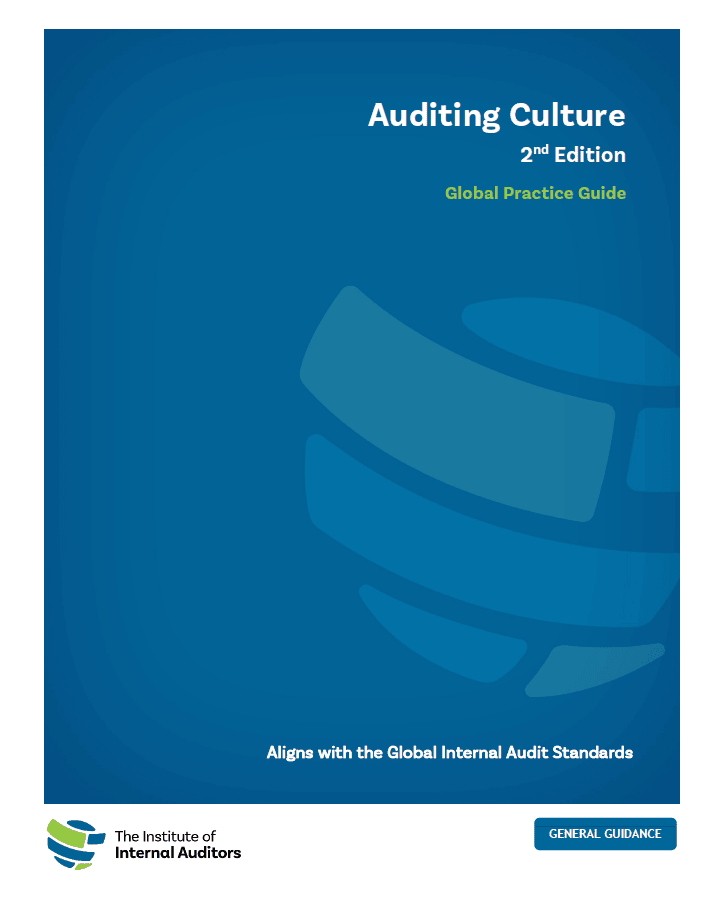Global Practice Guide: Auditing Culture, 2nd Edition
Guidance | July 25, 2024
Copyright Notice All content is protected by international copyright laws. You may reference or quote small portions of this document with proper attribution to The IIA, but unauthorized reproduction, distribution, or use beyond that, other than for your own personal use, is strictly prohibited and may constitute a violation of copyright law, resulting in civil and criminal penalties. Contact copyright@theiia.org for permission to use our materials.

All organizations have a culture, whether intentionally created or not. Likely there are also subcultures within an organization, especially if multiple locations or campuses exist.
This global practice guide will help internal auditors understand risks associated with an organization’s culture, how effective management of those risks supports a successful control environment, and how to approach an assessment of culture, and it’s now aligned with The IIA’s Global Internal Audit StandardsTM.
This guidance supersedes the previous edition published in 2019.